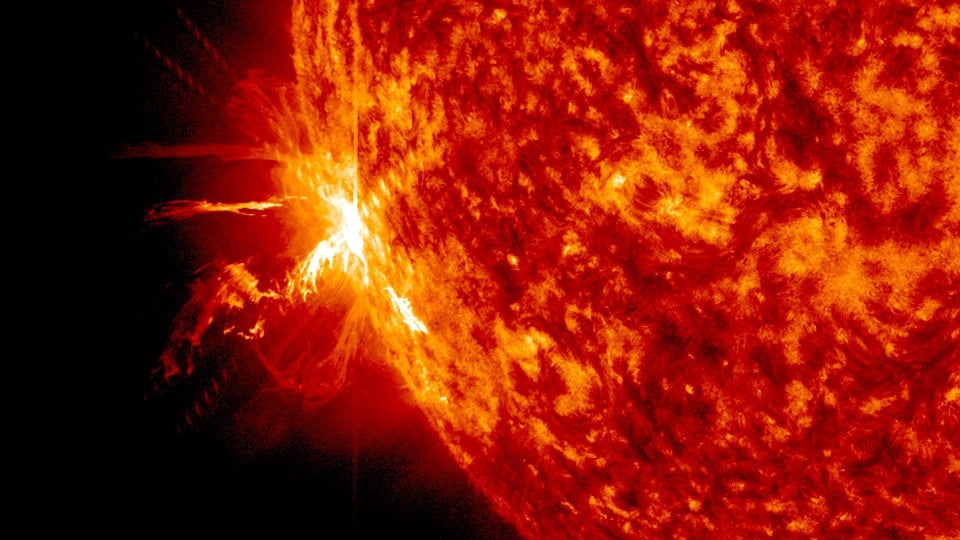Comet Lovejoy is drunk as a skunk.
Scientists have recently detected ethyl alcohol -- the same type in alcoholic beverages -- coming from the comet, as well as a sugar called glycolaldehyde. New research published Friday in the journal Science Advances suggests that the boozy space rock is releasing the equivalent of 500 bottles of wine per second.
"These detections suggest that comet chemistry is far more complex than we anticipated," Stefanie Milam, an astrochemist at NASA's Goddard Space Flight Center in Greenbelt, Maryland, and co-author of the research, told The Huffington Post in an email.
Although ethanol and glycolaldehyde have been previously detected in space clouds, the researchers noted that this new discovery marks the first time that ethyl alcohol has been found in a comet.
The finding may hold clues to how comets striking ancient Earth might have brought complex sugars, alcohols and other organic molecules to our planet -- a theory that some scientists believe may help to explain how life began.
If this is true, "life didn't have to start with just simple molecules like water, carbon monoxide, and nitrogen," Milam said in a statement. "So now you can see where sugars start forming, as well as more complex organics such as amino acids -- the building blocks of proteins -- or nucleobases, the building blocks of DNA."
The researchers drew their conclusions from observing comet Lovejoy as it passed near the sun in January, using the 30-meter telescope at Pico Veleta in the Spanish Sierra Nevada.
The team trained the telescope on the comet -- a frozen ball of rock and dust -- as it passed nearest the sun, so that they could watch as it heated up, defrosted and released clouds of gas.
As the comet made its closest approach to the sun, Lovejoy spewed out 20 tons of sugary, ethyl-filled water per second in the form of steam clouds. The researchers recorded microwave frequencies given off by molecules in the clouds, and found that the steam contained 21 different organic molecules, including ethyl alcohol and glycolaldehyde.
Next, the researchers hope "to look for these molecules in new comets and even fainter ones that pass by Earth routinely," Nicolas Biver of the Paris Observatory in France, and lead author of the paper, told HuffPost in an email. "Additionally, a search for more complex organic species will be conducted."
Also on HuffPost:

